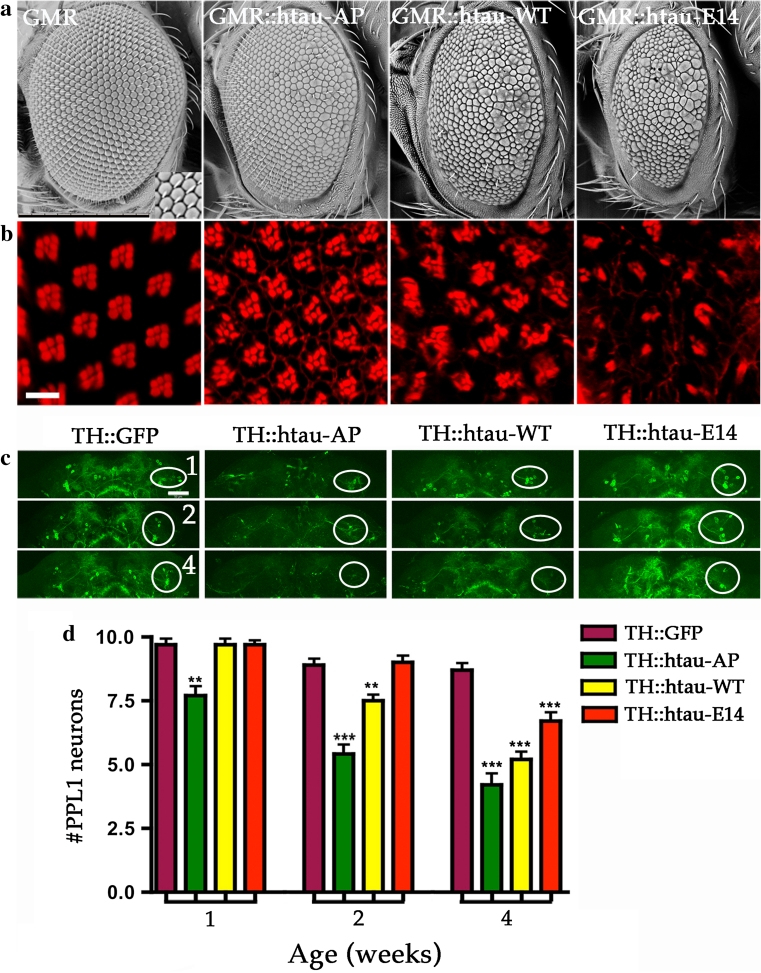Fig. 5.
Different phosphorylation site mutations of tau exert contrary effects on DA and histaminergic neurons. Representative SEM (a) and confocal (b) images of fly compound eyes. Control (GMR-GAL4) fly eyes show crystalline array of ~800 hexagonal-shaped ommatidia form the smooth external surface. Phalloidin staining reveals the underlying organization of each ommatidium with actin-rich rhabdomeres from seven photoreceptors being arranged in a trapezoid format. Expression of three human tau transgenic alleles, htauAP14 (GMR::htau-AP), htauWT (GMR::htau-WT), and htauE14 (GMR::htau-E14), produce different degrees of eye phenotypes and the severity ranking of eye defect is htauE14 > htauWT > htauAP14 that is based on external eye size and roughness and the internal organization of photoreceptor cells (a, b). Scale bars 10 μm. c Representative confocal images of control DA neurons marked with mCD8-GFP (TH::GFP), or co-expressing with either of the three human tau alleles (htauAP14, TH::htau-AP; htauWT, TH::htau-WT; and htauE14, TH::htau-E14) from 1-, 2-, and 4-week-old brains. Circles indicate the PPL1 cluster. d Quantitative analysis presents DA neuron numbers in PPL1 cluster at different ages from control and three tau alleles. TH::GFP (purple), TH::htau-AP (green), TH::htau-WT (yellow) and TH::htau-E14 (red). Values shown represent mean ± SEM (unpaired t test compares individual tau allele to control in the age-indicated groups; **P < 0.001; ***P < 0.0001, n = 12)

